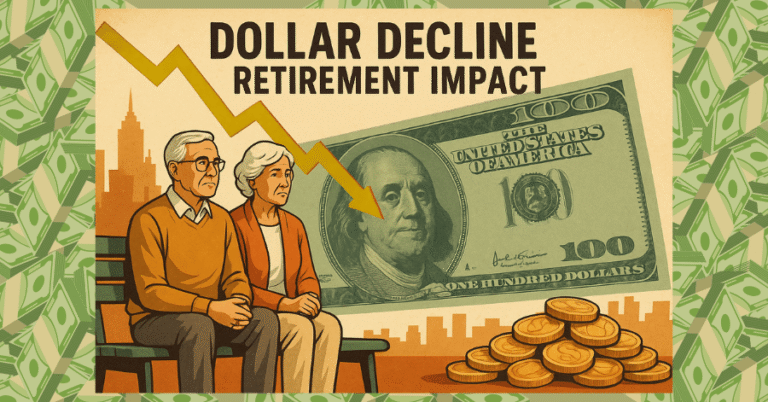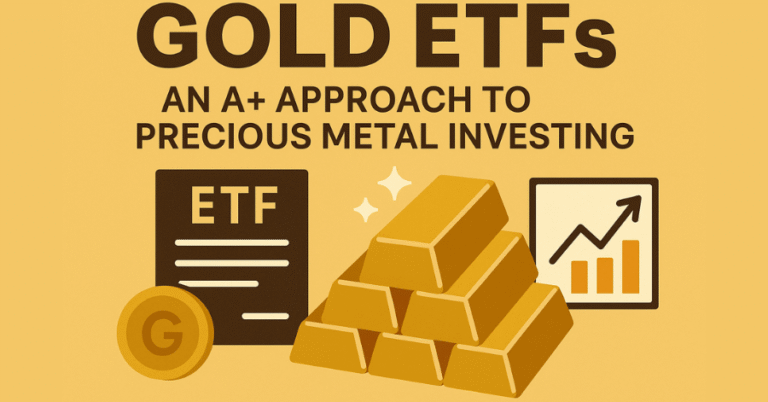Key Takeaways:
- Gold as a Premier Safe-Haven Asset: During market volatility, investors historically turn to gold as a portfolio stabilizer, as it often holds or increases its value when traditional stocks and bonds falter.
- Proven Performance in Major Crises: Gold has demonstrated its role as a reliable hedge during significant events like the 2008 Financial Crisis and the 2020 COVID-19 pandemic, where its price surged amid global uncertainty.
- A Tangible Store of Value: As a physical asset with a finite supply, gold’s value isn’t dependent on any single government or financial institution, making it a trusted store of value when confidence in fiat currency wanes.
- The Impact of Interest Rates: Gold is not a perfect hedge. Its performance can be negatively affected by periods of high interest rates and tightening monetary policy, which increase the opportunity cost of holding a non-yielding asset.
- A Key to Portfolio Diversification: Despite its sensitivity to interest rates, gold’s historical ability to mitigate risk makes it a crucial tool for diversifying a modern retirement portfolio against today’s economic and geopolitical instability.
Affiliate Disclosure: To support our mission of providing valuable financial analysis, this page may contain affiliate links. If you follow a link and make a purchase, we may earn a commission at no additional cost to you. We only recommend partners we thoroughly research and trust.
Read Our Article: Rio Reset Dollar Shakedown
 Is Gold Your Retirement Shield?
Is Gold Your Retirement Shield?
Introduction
During times of heightened market volatility, investors closely watch gold performance as a reliable indicator of stability. When financial markets experience extreme turbulence and traditional investments like stocks and bonds become unpredictable, many investors instinctively seek a safe harbor.
For centuries, gold has served as that anchor—a tangible asset often expected to hold or even increase its value when other assets falter.
Understanding the historical gold performance market volatility provides crucial insights into its role as a portfolio stabilizer and a potential hedge against the kind of economic uncertainties that events like the “Rio Reset“ might amplify.
Gold’s Historical Safe-Haven Credentials
History is replete with examples where gold has demonstrated its safe-haven qualities. During the 2008 Global Financial Crisis, as major banks teetered and stock markets plunged, gold prices saw a significant surge as investors fled to safety.
Similarly, the onset of the COVID-19 pandemic in 2020 triggered sharp market sell-offs, yet gold prices climbed, hitting new highs as uncertainty gripped the globe. This pattern, where gold often exhibits a low or negative correlation with equities during crises, highlights its potential as a portfolio diversifier.
Gold & Market Volatility: Your Retirement Shield?
Why Gold Matters During Volatility
- Safe Harbor: Investors seek gold when traditional assets (stocks, bonds) are unstable.
- Historical Anchor: Gold has consistently held or increased value during economic uncertainty.
- Portfolio Stabilizer: Often shows low or negative correlation with equities during crises (e.g., 2008 Financial Crisis, 2020 COVID-19 Pandemic).
Gold’s Unique Characteristics
- Tangible Asset: Independent of governments or financial institutions.
- Store of Value: Intrinsic value and finite supply make it attractive when confidence in fiat currencies wanes.
- Influencing Factors: Real interest rates can impact gold’s attractiveness; high rates increase the opportunity cost of holding non-yielding gold.
Note: Chart data is conceptual and illustrates trends described in the article, not actual historical prices.
When Gold May Underperform
- Early 1980s: Fed rate hikes led to prolonged bear market for gold.
- 2013 “Taper Tantrum”: Gold prices declined as monetary policy tightened.
- 2022 Rate Hike Cycle: Aggressive Fed rate hikes put downward pressure on gold.
- Strong Economies: Gold can underperform during robust economic recoveries or bull markets in equities.
- Shift in Sentiment: Decreased demand for defensive assets when investors favor riskier assets.
Key Takeaway: Gold is not a flawless hedge. Its performance is influenced by interest rates, monetary policy, and market sentiment. It’s one part of a balanced investment strategy.
Navigating Today’s Volatile Landscape
In a climate of rising geopolitical tensions and potential economic shifts (e.g., “Rio Reset”), gold’s historical behavior suggests it remains valuable for capital preservation and risk mitigation in a diversified portfolio.
Explore More: Top Informational Sources
Ready to Take Action?

If you are ready to take action and secure your retirement, you must act NOW. With the Rio Reset accelerating dollar decline, waiting could cost you everything. Smart retirees are already moving to gold—are you? Get your FREE Info Kit immediately and discover the #1 strategy financial experts use to protect retirement wealth from currency collapse. Limited time offer—claim yours before it’s gone!
Affiliate Disclosure: To support our mission of providing valuable financial analysis, this page may contain affiliate links. If you follow a link and make a purchase, we may earn a commission at no additional cost to you. We only recommend partners we thoroughly research and trust.
Frequently Asked Questions: Gold Investment Essentials
Q: How much gold should I allocate to my retirement portfolio?
A: Financial advisors typically recommend 5-10% of your portfolio in precious metals, with conservative investors considering 10-15% during economic uncertainty. Your allocation should depend on your age, risk tolerance, and current market conditions. Gold should complement, not replace, a diversified investment strategy.
Q: What are the different ways to invest in gold?
A: You can invest in gold through:
- Physical gold (coins, bars)
- Gold ETFs and mutual funds
- Gold mining stocks
- Gold IRAs for retirement accounts
- Digital gold platforms Each method has different costs, storage requirements, and tax implications.
Q: Should I buy physical gold or gold ETFs?
A: Physical gold offers direct ownership and crisis protection but requires secure storage and insurance. Gold ETFs provide easier liquidity and lower storage costs but lack physical possession. Many investors use a combination of both approaches.
Q: What are the costs associated with gold investing?
A: Costs vary by investment type:
- Physical gold: premiums over spot price (2-8%), storage fees, insurance
- Gold ETFs: annual expense ratios (0.25-0.40%)
- Gold IRAs: setup fees, annual maintenance, storage fees
- Mining stocks: standard brokerage commissions
Q: How do I store physical gold safely?
A: Storage options include:
- Bank safety deposit boxes
- Private vault services
- Home safes (with proper insurance)
- Allocated storage with precious metals dealers Consider insurance coverage and accessibility when choosing storage methods.
Q: Are there tax implications for gold investments?
A: Yes. Physical gold is typically taxed as a collectible with higher capital gains rates (up to 28%). Gold ETFs may have different tax treatment. Gold IRAs follow traditional IRA tax rules. Consult a tax professional for your specific situation.
Q: When is the best time to buy gold?
A: Rather than timing the market, consider dollar-cost averaging by making regular purchases. Gold often performs well during periods of high inflation, currency weakness, or geopolitical uncertainty, but these conditions are difficult to predict consistently.
Q: How liquid is gold as an investment?
A: Gold is generally highly liquid. Physical gold can be sold to dealers quickly, though at a slight discount to spot price. Gold ETFs trade like stocks during market hours. Mining stocks offer standard stock market liquidity.
Conclusion
Gold’s historical ability to act as a stabilizing force during periods of extreme market volatility makes it a compelling asset for consideration. As investors navigate an increasingly complex global economic environment, the lessons from gold performance and market volatility in the past offer a valuable framework for building more resilient portfolios. To see how these considerations fit into the broader picture of potential global financial changes, review our main pillar article: “Rio Reset Dollar Shakedown: Is Gold Your Retirement’s Unseen Shield?”






